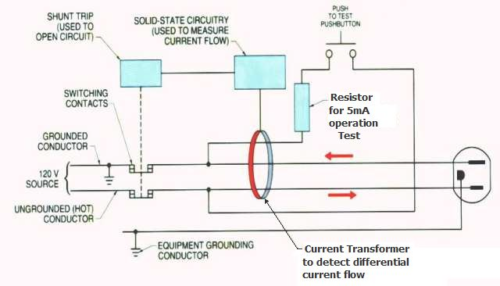Presentations I have given over many years about cloud safety will reference the fact a ground fault circuit interrupt (GFCI) made toasters safe.
My point has been simply that virtual machines, containers, etc. have an abstraction layer that can benefit from a systemic approach to connectivity and platform safety, rather than pushing every instance to be armored.
The background to the toaster safety story is actually from a computer science (and EE) professor in the 1950s at Berkeley. He was researching physiological effects of electric shocks when applied to humans and animals to (pinpoint exactly what causes a heart to stop).
He narrowed the cause of death enough to patent an interrupt device for electric lines, which basically is a firewall at a connection point that blocks flow of current:

The first regulation requiring GFCI was for electricians working on swimming pools:
GFCIs are defined in Article 100 of the NEC as “A device intended for the protection of personnel that functions to de-energize a circuit or portion thereof within an established period of time when a current to ground exceeds the values established for a Class A device.” Class A GFCIs, which are the type required in and around swimming pools, trip when the current to ground is 6 mA or higher and do not trip when the current to ground is less than 4 mA.
Fast forward to cartoonists today and some obviously have completely missed the fact that selling consumers a firewall for connected toasters is a 50-year old topic with long-standing regulations.
